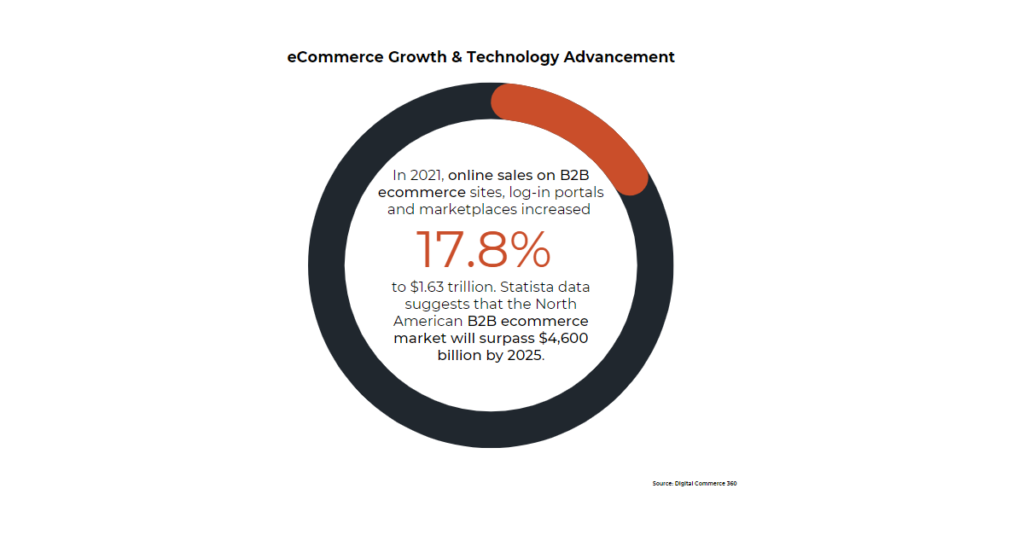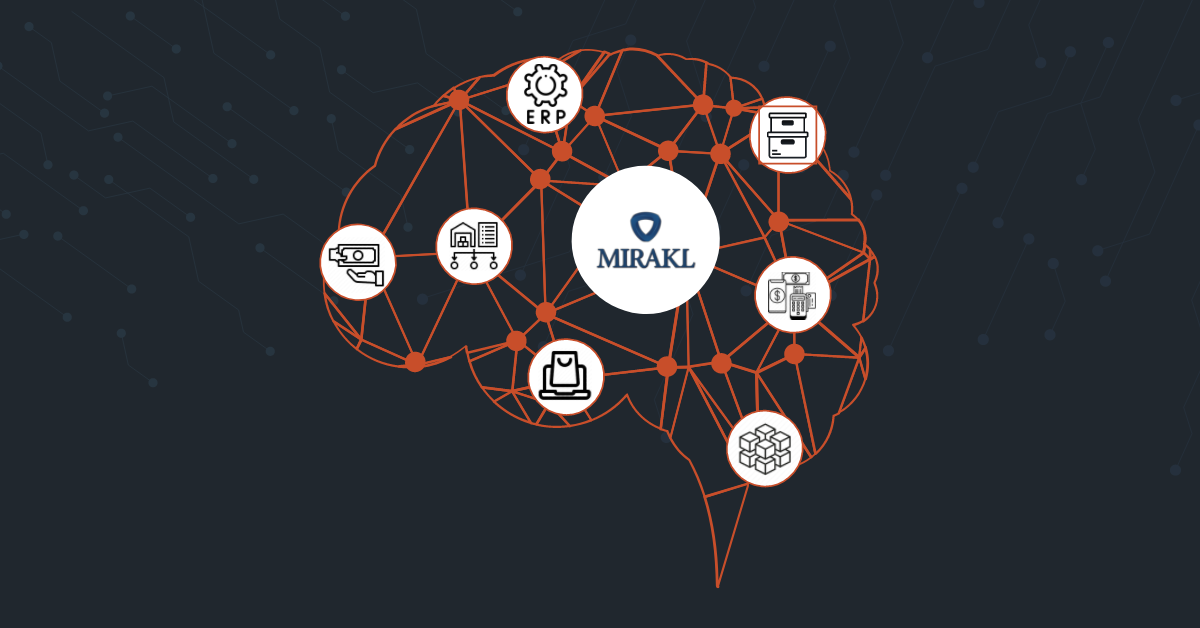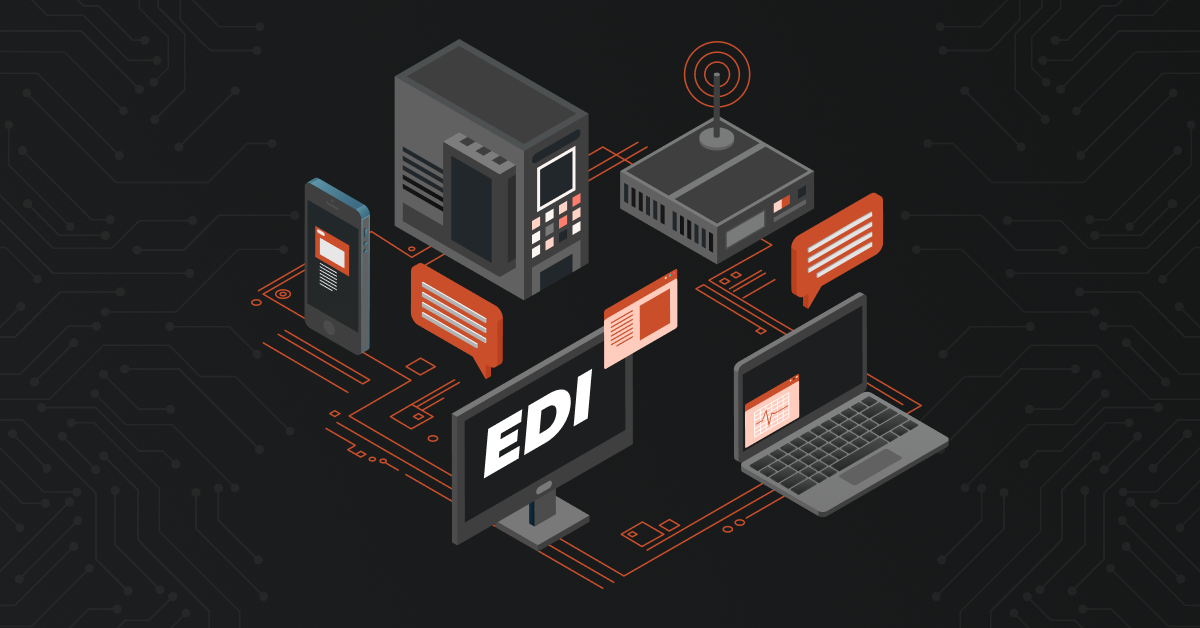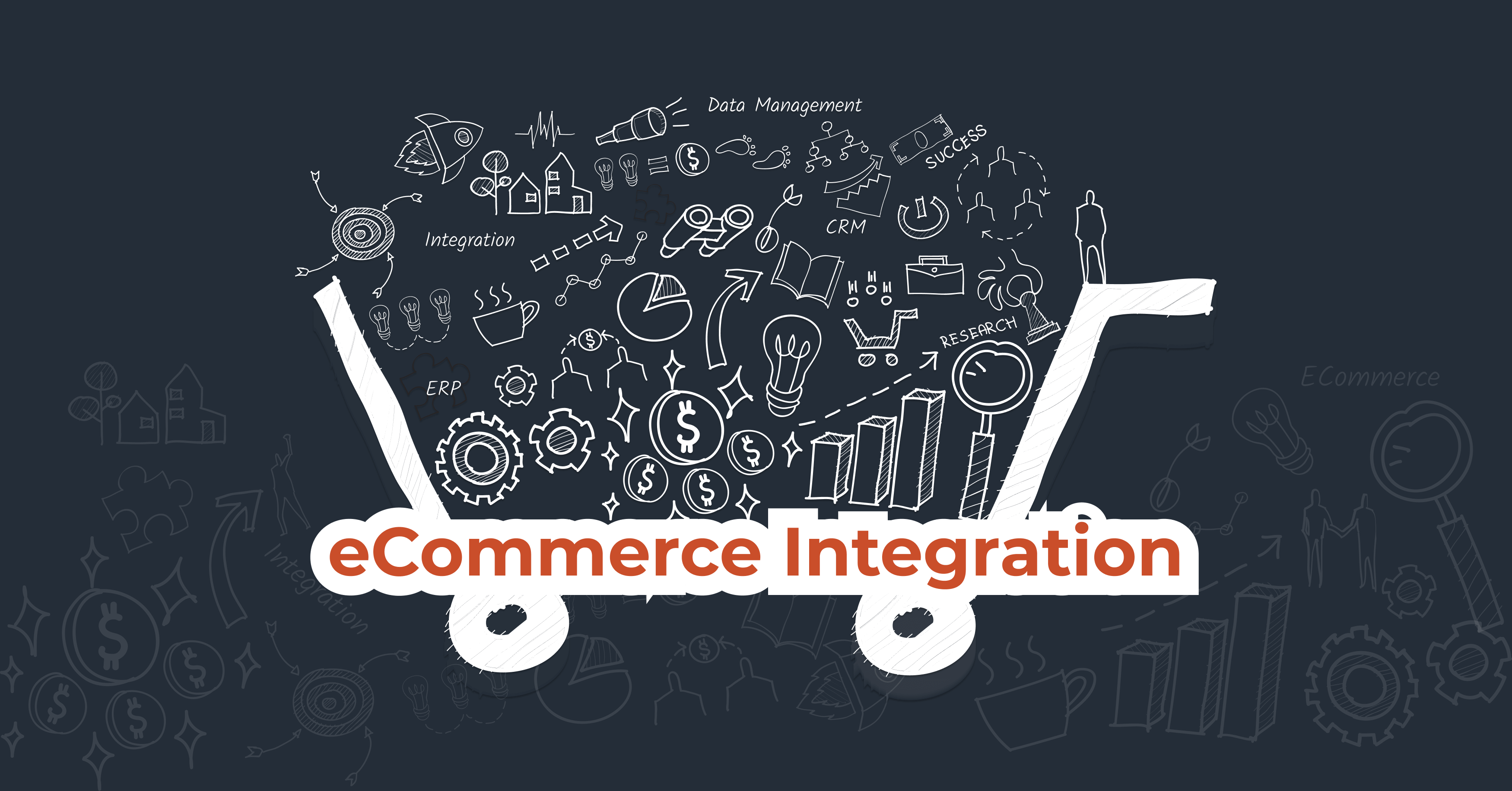Wholesale distributors are always looking for new ways to improve their business. They want to know the latest trends so they can stay ahead of the competition. The problem is, it’s not always easy to keep up with the latest trends. There are so many different things happening in the world of wholesale distribution, it can be tough to know what’s important and what’s not. That’s why we’ve put together this list of 2023 wholesale distribution trends you must know. These are the trends that we believe will have the biggest impact on the wholesale distribution industry in the coming year. So if you want to stay ahead of the curve, scroll down and see where you need to focus on to bring value-added transformation.
Emerging Competition
The landscape of wholesale distribution is constantly changing, and it can be hard to keep up with the latest trends. Here are some of the biggest future competency requirements in wholesale distribution that you need to know about:
New Entrants
There are always new players entering the market, which can make it difficult to stay ahead of the competition. Keep an eye on new entrants and be ready to adapt your strategy to stay ahead.
Marketplaces are springing up all over the place, promising a wider range of items at lower pricing, and better accessibility. Furthermore, manufacturers are beginning to sell directly to end users. You need to understand this market landscape to bring the right solution.
Invest in cutting-edge digital capabilities: Create a strong digital wing with a responsive design, a dedicated product information management (PIM) tool, an expanded product catalog, a smart site search, self-service capabilities, and a mobile app.
Create a plethora of value-added services: Provide 24 hour assistance, hold events and certification programs to create brand value.
Make your company indispensable to customers: To establish deeper client ties, use digital technologies to tailor solutions for their complicated demands and create more consultative roles.
Read More: Top 7 Seamless Integrations for Wholesale Distributors – (Types & Solutions)
Increasing Regulation
The regulatory environment is constantly changing, and this can impact your business in a number of ways. Make sure you keep up-to-date with changes in regulation and how they might affect your business.
You must be aware of not just local and national legislation, but also international rules, particularly those pertaining to client protection and product traceability. Depending on your distribution vertical, you need to track, trace, and monitor items across the supply chain.
Intelligent distributors, on the other hand, understand that all they need is the correct digital platform. They can swiftly pivot and react to security and regulatory needs thanks to a powerful, industry-specific ERP. With the proper technology, you can achieve long-term compliance and regulatory requirements while having a minimum impact on your bottom line.
eCommerce Growth & Technology Advancement

The growth of eCommerce is impacting all businesses, but it’s especially relevant for wholesalers. You need to make sure your online presence is strong and that you’re able to meet customer expectations when it comes to delivery timescales.
Moreover, the pandemic has made the digital landscape the new norm. Customers’ needs are always changing. They are spending more time on online platforms & marketplaces. And they expect a B2C like seamless experience on B2B platforms. So, you need to make sure you’re keeping up-to-date with the latest technology and eCommerce growth factors to help your customers get what they want and need from your business. Be prepared to adapt your offering accordingly.
Here are some of the top strategies that will help you reap best out of the eCommerce:
Wholesale distribution integration must become leaner, meaner, and more nimble in order to survive. To meet client expectations, one proven method is to embrace the omni-channel sales approach.
However, many wholesale distributors continue to employ separate systems to serve various distribution channels, resulting in information silos throughout your organization. This reduces insight into your supply chains and makes it more difficult for your company to deliver consistent customer experiences across all sales channels.
- Getting ERP software and ensuring system integration will help to improve productivity by providing capabilities like automatic alerts, notifications, and inventory replenishment. It can also assist you in identifying inventory “blind spots” by offering relevant business analytics and end-to-end insight into your inventory.
- A mobile-first eCommerce site is the need of the time. Today, people are 62% less likely to purchase from a brand after a negative mobile experience. Developing an effective B2B e-commerce strategy entails concentrating on your mobile clients’ demands and providing a mobile B2B solution with the greatest possible user experience. Any effective mobile-first B2B e-commerce strategy should provide a personalized, secure experience with improved B2B payment processes. It must support mobile ordering (and re-ordering) and provide push notifications indicating when things are back in stock. B2B purchasers have evolved. They demand powerful online search, flexibility, personalisation, and real-time updates. And they want it all on their phone.
- Going headless is becoming more common. Headless commerce architecture allows B2B firms to decouple the front end of their website from the back end. This approach allows merchants to develop and modify whatever they want. Companies with headless architecture are also 77% more likely to be expanding into new channels compared to non-headless companies (at 54%). Reasons companies are going headless is that it ensures complete customization, faster load time and easy access to market. . Once installed, headless makes it easier to reduce your website budget since you won’t require technical help to update the back end every time you want to make a minor change to the front end.
Technology is always evolving, and this can present both opportunities and challenges for wholesalers. Make sure you’re keeping up-to-date with the latest technology trends and considering how they could benefit (or impact) your business.
Recommended Reading: The Ingredients for Running a Successful Wholesale Distribution Business
Demand for Personalized Services
The personalization of B2B products and services has been a wholesale distribution trend for some time now. This trend is likely to continue, as more businesses seek ways to stand out in a competitive marketplace.
There are many ways to personalize B2B products and services. One approach is to offer customizations or modifications that are specific to the customer’s business. This could include tailoring product features to meet the customer’s unique needs or providing services that are customized to the customer’s workflow.
Another way to personalize B2B products and services is to offer a higher level of service than the competition. This could include 24/7 customer support, expedited shipping, or exclusive access to product beta testing.
Whatever approach you take, the goal is to make your customers feel like they are your top priority. By personalizing your products and services, you will build trust and loyalty with your customers, which will be essential for long-term success in the wholesale distribution industry.
As you grow, you’ll have more data to manage, which means the Excel spreadsheet that worked in the beginning will no longer suffice.
To successfully communicate the value of your items to your consumers, you must have accurate and consistent product information across channels, including clear descriptions and high-quality photographs..
A PIM can become your single source of product truth by serving as a central hub for your product content management and synchronizing it throughout your IT stack – ecommerce platform, ERP, OMS, and other third-party connections. A product information management (PIM) platform collects, manages, improves, and distributes product information across several distribution channels, including your ecommerce site, social sales channels, marketplaces, and even advertising networks.
Are you wondering why you should start with PIM to ensure eCommerce growth in 2023?
Customers today expect consistent, high-quality experiences across all touchpoints with a brand, including marketplaces, social media, eCommerce sites, and more. Giving your customers the correct technical, instructional, and emotional information about the products you offer is a vital component of these interactions. This information must be updated, accurate, and tailored to the sales channel, geography, and language used by your customers.
Moreover, customers are now expecting individualized guidance and suggestions about what you sell. It might be difficult to provide all of this without the best-in-class PIM solution, which consolidates all of your product information.
So, if you are getting ready to organize your 2023 tech stack, make sure you incorporate the best-in-class PIM solution.
Relevant Reading: The New B2B Growth Equation: How To Maximize Your Customer Lifetime Value
Streamlining Agile & Adaptable Supply Chain
The COVID-19 pandemic has created a global disruption that has impacted supply chains around the world. This has resulted in disruptions to the supply of raw materials, delays in production, and challenges with logistics and transportation. As a result, businesses must be agile and adaptable to survive and thrive in this new environment.
- Use innovative technologies to solve obstacles
- Implement new emergency plans
- Prioritize U.S.-based supply chain solutions
- Find innovative eco-friendly services and solutions
- Increase inventory reserves & invest in supply chain agility
- Utilize advanced analytics capabilities & Forecasting
To bring the right solution, the supply chain leaders must be aware of these recurring post-pandemic trends
Increased demand for online ordering: In the wake of the pandemic, there has been a dramatic increase in the number of people shopping online for goods and services. This trend is only expected to continue as consumers become more comfortable with buying products and services online. As a result, wholesale distributors must make sure their websites are user-friendly and offer a seamless ordering experience.
Shift from brick-and-mortar to eCommerce: The pandemic has accelerated the shift from brick-and-mortar to eCommerce as businesses have had to close their physical locations due to lockdown measures. This trend is expected to continue even after the pandemic ends as customers become more accustomed to shopping online. Wholesale distributors must therefore focus on developing their eCommerce platforms to meet this growing demand.
Changes in consumer behavior: The pandemic has also changed consumer behavior, with people becoming more price-conscious and focused on value. They are also looking for brands that align with their values and that they can trust.

The Drive for Differentiation
Differentiation is key for wholesale distributors. In order to compete in today’s market, it is essential to offer products and services that are unique and add value for customers on digital platforms. In 2020 and 2021, 75% of B2B buyers preferred digital interactions to in-person. And last year, it was estimated that 73% of ecommerce sales were from mobile devices.
However, the B2B sector still finds it difficult to provide B2C experience. So, while you enter a new year, it’s crucial to make your business differentiable by providing B2C experience.
Even today 46% of B2B Buyers find it is difficult to compare items online. Furthermore, they are dissatisfied with the fact that they cannot quickly complete repeat orders on numerous sites. Slow reaction times also irritate them.
Here are some ways to differentiate your wholesale business:
Offer a wide range of products & Advanced Search Capabilities: Customers are always looking for new and innovative products. By offering a wide range of products, you can become their go-to source for all their needs.
If your product has several characteristics to pick from, include all of these key factors in the search box to ensure clients can locate the exact specification they need. To make it even more user-friendly, immediately update the amount of search results without refreshing the page.
Provide custom solutions & deliver exceptional customer service : Many Businesses require specific solutions to meet their needs. As a wholesale distributor, you can offer custom solutions that are tailored to your customer’s individual requirements.
Excellent customer service is essential for building long-term relationships with customers. By going above and beyond for your customers, you will create loyalty and repeat business.
Ensure omni-channel commerce to enhance competence: In order to meet the needs of modern customers, distributors must have an omnichannel commerce strategy. This means selling through multiple channels (e.g., online, brick-and-mortar, mobile) and providing a seamless experience across all channels. Integrating your ERP with other systems & getting the best-in-class PIM solution will help you streamline your omnichannel sales for generating better customer service and optimizing buyer’s journey.
Focus self-service portals: Buyers are getting more comfortable purchasing products with little to no help as B2B firms embrace selling products online. This means self-service customer portals are becoming increasingly important. B2B buyers like to do their research and purchase through the same channel, without having to talk with a sales representative. According to recent research, 86% of customers preferred using self-service options over contacting sales. the more automated your purchasing process for basic transactions, the better.
Streamline big data analytics & IoT integration: With access to more data than ever before, wholesalers must leverage data and analytics to make better decisions about their business. Big data can help you improve operations, generate more leads, understand your customers better, and make better decisions about inventory and pricing.
Talent Management & Retainment will Gain More Focus
The talent crunch is one of the most pressing problems facing the wholesale distribution industry today. With an aging workforce and a shortage of skilled labor, companies are struggling to find and retain top talent.
To address the talent crunch, companies must first identify the root causes. One of the primary causes is an aging workforce. As baby boomers retire, they leave behind a skills gap that cannot be filled by the current pool of workers. In addition, the number of people entering the workforce each year is not enough to keep up with demand.
The second cause is a lack of skilled labor. With advances in technology, many jobs in wholesale distribution now require specialized skills and training. However, there are not enough people with these skills to fill all of the available positions. This problem is compounded by the fact that many baby boomers are retiring with valuable knowledge and experience that will be lost forever if not passed on to the next generation.
To solve the talent crunch, companies must take a holistic approach that includes recruiting, training, and retention strategies. First, they must identify ways to attract and recruit top talent. This may include offering competitive salaries and benefits, as well as creating a positive work environment that supports career growth. Second, companies must invest in training and development programs to ensure that their employees have the skills they need to be successful in their roles. Finally, companies must implement retention strategies to keep their best employees from leaving for greener pastures.
See more trends: B2B Talent Acquisition & Retention: Top Challenges & Trends You Must Know
Sustainable Distribution Practices to Reduce Carbon Footprint
As the world becomes more focused on sustainability, many businesses are looking for ways to make their operations more sustainable. One area that is often overlooked is distribution. Sustainable distribution practices can help reduce your carbon footprint, save money, and improve your customer service.
There are many different ways to make your distribution more sustainable. One way is to use recycled materials for packaging and shipping. This can include using recycled paper for packing material, using recyclable plastic bags or containers, or even using refillable containers.
Another way to be more sustainable is to use green transportation options. This can include using electric vehicles, hybrid vehicles, or even bicycles for local deliveries. If you have a large fleet of vehicles, you may want to consider investing in alternative fuels such as biodiesel or compressed natural gas.
You can also adopt sustainable distribution practices by streamlining your operation. This can involve consolidating shipments to reduce fuel consumption, using real-time tracking to optimize routes, and automating processes to reduce paperwork and waste.
Sustainable distribution practices not only benefit the environment but can also improve your bottom line. By reducing your carbon footprint, you can save money on fuel and other operating costs. And by improving your customer service, you can gain a competitive edge in today’s market.
Get Ready to Welcome 2023
Wholesale distributors are at a fork in the road unlike any other. Economic uncertainty, an inflow of new competitors, and a skills scarcity will compel them to discover new methods to compete and develop. They’ve already made enormous advancements to overcome hardships. However, aggressive technology adoption is needed to prosper in the following year and beyond if they want to maintain their pace to survive in the ever changing wholesale distribution landscape.
Get in touch with our experts in DCKAP to know more about how to streamline B2B eCommerce through the right technology adoption to differentiate your wholesale distribution business.
Contents




